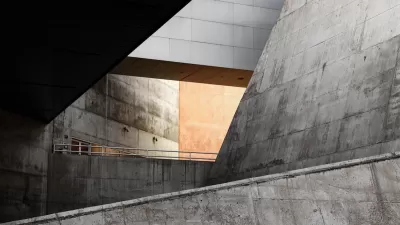Eliot Brown explains the starchitectural math driving a Manhattan developer to demolish their existing Park Avenue office tower in order to make room for the city's next architectural gem.
Last week, L&L Holding Co. began the process of seeking a top architectural firm to design a new tower to replace their existing office building along Park Ave. David Levinson, L&L's chief executive hopes to replace the 1950's boxy tower with a more iconic design in order to increase rental revenue, and is prepared to spend $750 million to do so.
"While older, unremarkable buildings similar to the current 425 Park Ave. tend to fetch annual rents in the $50-to-$70 per square foot range, top architectural icons [like] the Seagram Building at 375 Park Ave. easily win tenants paying over $100 a foot."
The plan will have to overcome the challenging financing environment to proceed. However, Levinson has faith that a great architectural design will bring investors and renters to the building.
More challenging may be the quirky zoning restrictions attached to the site: "complicating the redevelopment for 425 Park and other buildings on Park Avenue is a quirk of the city's zoning code that would force Mr. Levinson to build a smaller tower if he demolished the existing building in its entirety. To avoid this, Mr. Levinson plans to leave in place the steel skeleton for the bottom 25% of the building, the minimum required," states Brown.
FULL STORY: Planning New York's Next Iconic Building

Alabama: Trump Terminates Settlements for Black Communities Harmed By Raw Sewage
Trump deemed the landmark civil rights agreement “illegal DEI and environmental justice policy.”

Planetizen Federal Action Tracker
A weekly monitor of how Trump’s orders and actions are impacting planners and planning in America.

The 120 Year Old Tiny Home Villages That Sheltered San Francisco’s Earthquake Refugees
More than a century ago, San Francisco mobilized to house thousands of residents displaced by the 1906 earthquake. Could their strategy offer a model for the present?

Ken Jennings Launches Transit Web Series
The Jeopardy champ wants you to ride public transit.

BLM To Rescind Public Lands Rule
The change will downgrade conservation, once again putting federal land at risk for mining and other extractive uses.

Indy Neighborhood Group Builds Temporary Multi-Use Path
Community members, aided in part by funding from the city, repurposed a vehicle lane to create a protected bike and pedestrian path for the summer season.
Urban Design for Planners 1: Software Tools
This six-course series explores essential urban design concepts using open source software and equips planners with the tools they need to participate fully in the urban design process.
Planning for Universal Design
Learn the tools for implementing Universal Design in planning regulations.
Clanton & Associates, Inc.
Jessamine County Fiscal Court
Institute for Housing and Urban Development Studies (IHS)
City of Grandview
Harvard GSD Executive Education
Toledo-Lucas County Plan Commissions
Salt Lake City
NYU Wagner Graduate School of Public Service





























